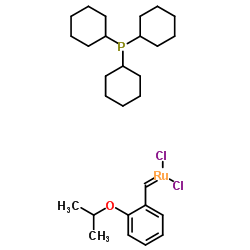SYNTHESIS AND SPECTROSCOPIC DIFFERENTIATION OF 2- AND 4-ALKOXYTHIOTETRONIC ACIDS.
Abhijit A Patil, Parag Sayal, Marie-Lise Depondt, Ryan D Beveridge, Anthony Roylance, Deepti H Kriplani, Katie N Myers, Angela Cox, David Jellinek, Malee Fernando, Thomas A Carroll, Spencer J Collis
Index: Heterocycles 63 , 5-8, (2004)
Full Text: HTML
Abstract
O-Alkylation of thiotetronic acids gives a mixture of 2- and 4-position enol ether products. Comparison of the physical data revealed that UV spectroscopy was the most reliable method of distinguishing between these related ethers. We have determined that 4-position ethers have a distinct absorption between 235-240 nm, while 2-position ethers have two absorbance peaks, one between 205-220 nm and the other between 305-310 nm. This report describes the synthesis and unambiguous characterization of 2- and 4-methoxy-3,5-dimethylthiotetronic acids. The UV absorption properties of several other pairs of thiotetronic acid ethers confirm that these differences are general features that provide a simple method for distinguishing between 2- and 4-substituted isomers.
Related Compounds
| Structure | Name/CAS No. | Molecular Formula | Articles |
|---|---|---|---|
 |
DICHLORO(O-ISOPROPOXYPHENYLMETHYLENE)(TRICYCLOHEXYLPHOSPHINE)RUTHENIUM(II)
CAS:203714-71-0 |
C28H45Cl2OPRu |
|
Ruthenium-based heterocyclic carbene-coordinated olefin meta...
2010-03-10 [Chem. Rev. 110 , 1746, (2010)] |
|
Olefin Metathesis and Beyond A list of abbreviations can be ...
2000-10-01 [Angew. Chem. Int. Ed. Engl. 39 , 3012, (2000)] |
|
The development of L2X2Ru=CHR olefin metathesis catalysts: a...
2001-01-01 [Acc. Chem. Res. 34 , 18, (2001)] |
|
Sequential catalysis: a metathesis/dihydroxylation sequence.
2006-03-13 [Angew. Chem. Int. Ed. Engl. 45 , 1900, (2006)] |
|
Efficient large-scale synthesis of BILN 2061, a potent HCV p...
2006-09-15 [J. Org. Chem. 71 , 7133, (2006)] |